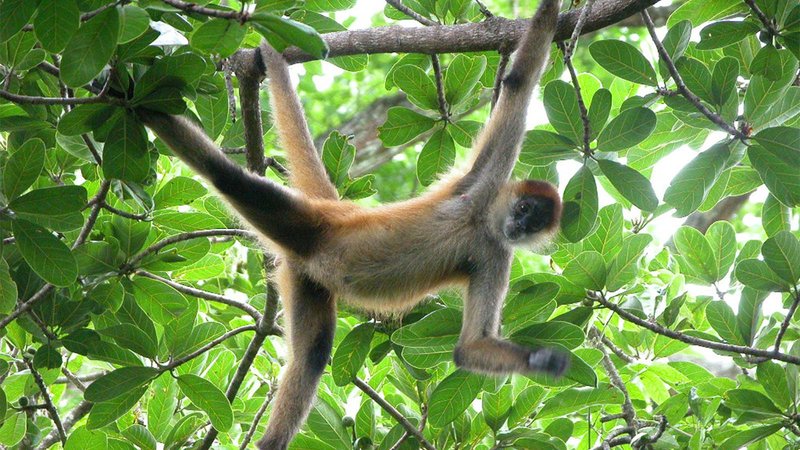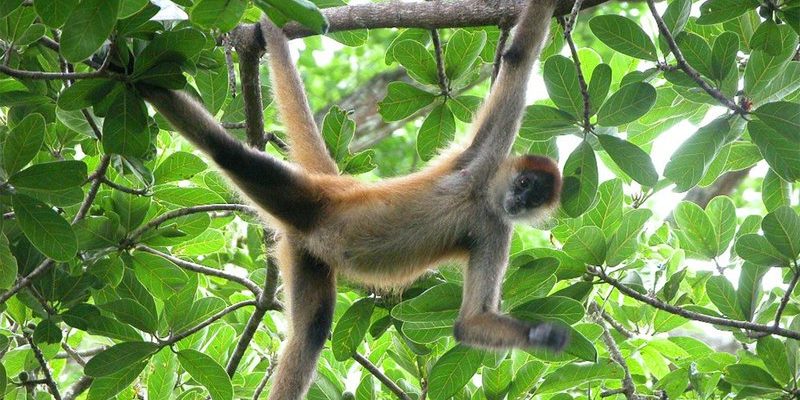
Now, think of culture as a vast tapestry, where different elements—like stories, art, and beliefs—intertwine to create a rich narrative. The spider monkey, with its vibrant personality and intriguing behaviors, becomes a thread in this tapestry. It’s not just about how it interacts with its environment, but also how humans interpret its existence. So, grab your coffee, and let’s dive into the world of spider monkeys and their cultural representation.
Symbolism in Indigenous Cultures
Many indigenous cultures in Central and South America see the spider monkey as a symbol of balance and harmony. These communities often highlight the monkey’s ability to navigate both the trees and their environment with grace. This skill represents a connection between the earth and the heavens, showing how all living things interact in a delicate ecosystem.
In some stories, the spider monkey is portrayed as a trickster. It’s often involved in tales where it outsmarts other animals or humans, using its wits to escape tricky situations. For example, in certain folklore, this cunning behavior is seen as a metaphor for resilience. When faced with challenges, just like the spider monkey, one can find creative solutions. It teaches us that strength isn’t just about brawn; sometimes, it’s about using your head.
Moreover, the spider monkey also plays a role in the spiritual beliefs of these cultures. Some tribes believe that seeing a spider monkey can be an omen or a sign from the spirits. This can range from messages about upcoming journeys or even warnings about upcoming challenges. Each encounter with the monkey is seen as an opportunity for reflection and connection with nature.
Representation in Art and Literature
When it comes to art, the spider monkey has taken on many forms. You might find it depicted in vibrant murals or carved into wooden sculptures, reflecting its playful nature and lively spirit. Artists often capture the monkey’s unique posture and facial expressions, highlighting its role in the ecosystem. These artistic representations serve not only as decorations but also as reminders of the importance of biodiversity.
In literature, the spider monkey pops up in various tales, often embodying themes of freedom and adventure. For example, children’s books often use monkey characters to teach lessons about friendship and bravery. The spider monkey’s agile movements and social behaviors make it an ideal protagonist for stories aimed at younger audiences. It’s relatable in its mischievousness, often getting into trouble yet always finding a way out, resonating with the youthful spirit in many of us.
Moreover, contemporary authors and poets have drawn on the imagery of spider monkeys to symbolize freedom and the wild spirit within us all. In a world where so many feel confined by routine, the spider monkey becomes a reminder to embrace our instinctual side, urging us to “swing” outside the box and explore new horizons.
Folklore and Myths Involving Spider Monkeys
In many cultures, spider monkeys are woven into folklore that teaches moral lessons. One prevalent myth involves a spider monkey that helps other animals escape danger, illustrating the value of community and teamwork. Just like in human societies, these stories emphasize the idea that working together can help overcome difficulties.
Another popular tale tells of spider monkeys who acted as mediators between humans and nature. In these stories, when humans disrespect the environment, the spider monkeys take action. They might cause chaos or disruption, essentially reminding humans of their responsibilities toward nature. This narrative serves as a powerful reminder of our ties to the earth and the consequences of our actions.
Interestingly, the spider monkey sometimes appears in creation myths, symbolizing the spirit of the wild. These stories often portray them as guides or protectors, leading people through the forests and teaching them about the delicate balance of life. Such tales reflect the deep respect these cultures have for the spider monkey and its vital role in maintaining ecological health.
Conservation and Cultural Significance
As urbanization and deforestation threaten the habitats of spider monkeys, their cultural significance has never been more important. Many communities are rallying to protect these animals, recognizing that their existence is intertwined with their cultural heritage. The loss of spider monkeys could mean the loss of stories, art, and traditions that have been passed down through generations.
Conservation efforts often highlight the spiritual and cultural roles these monkeys play. By educating people about their importance, many organizations are working to ensure that future generations can enjoy these magnificent creatures. For instance, community-led initiatives often include local folklore and the symbolic meanings of the spider monkey, making conservation a collective cultural effort rather than just an environmental one.
Interestingly, as more people learn about spider monkeys and their roles in folklore, there’s been a resurgence of interest in protecting them. This renewed appreciation not only fosters a deeper connection to nature but also keeps these valuable stories alive. The spider monkey’s presence in culture serves as a crucial reminder of our responsibilities toward wildlife.
Media Representation and Popular Culture
In modern media, spider monkeys often appear in documentaries, animated films, and TV shows. Their lively behavior and playful nature make them perfect candidates for family-friendly content. Films featuring animals often imbue them with human-like traits, making them relatable and endearing to audiences.
You might remember seeing a spider monkey in animated features, where they often serve as comic relief or adventurous sidekicks. These portrayals help educate viewers about the species while entertaining them. By embedding the spider monkey into popular culture, it sparks curiosity and encourages a greater appreciation for wildlife.
Moreover, documentaries showcase the spider monkey’s habitat, behaviors, and conservation needs, raising awareness about the challenges they face. Seeing these creatures in their natural environment can inspire a sense of awe, prompting discussions around conservation and environmental awareness. The more people know about spider monkeys, the more they can advocate for their protection.
Final Thoughts on Spider Monkeys in Culture
The spider monkey is more than just a fascinating animal; it’s a symbol steeped in culture and folklore. From its roles in indigenous stories to its portrayals in art and media, this primate teaches us about resilience, community, and our connection to the natural world.
As we face environmental challenges, recognizing the cultural significance of the spider monkey can inspire us to protect not only the species itself but also the rich tapestry of stories it represents. So, the next time you hear a tale involving a spider monkey, remember that it’s not just a story—it’s a piece of a larger conversation about nature, culture, and our role in preserving both.
By understanding and respecting these narratives, we can help ensure that the spirit of the spider monkey continues to swing through the hearts and minds of people around the world.

